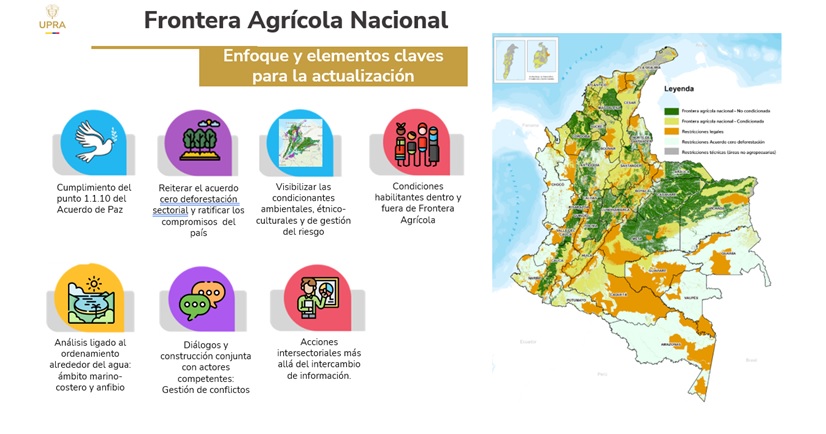Bogotá D. C., (@Minagricultura, @UPRAColombia). In 2016, the Government of Colombia and the Revolutionary Armed Forces of Colombia (FARC) signed a Peace Agreement that marked a turning point in the country’s history. This agreement, the result of years of dialogue, not only put an end to more than 50 years of armed conflict but also aims to transform the regions most affected by violence. Through rural reforms, political participation, demobilization, and justice, the Agreement outlines a roadmap for a fairer and more inclusive country, where rural development, citizen engagement, and respect for human rights are key. Consult the full document here.
The Rural Agricultural Planning Unit (UPRA), as a leader in the management of the Colombian countryside, has played a key role in fulfilling this Agreement. One of its main tasks has been updating the national agricultural frontier, as referenced in point 1.1.10, Closure of the Agricultural Frontier and Protection of Reserve Areas, of the Final Agreement for the End of the Conflict and the Construction of a Stable and Lasting Peace.
In 2018, UPRA completed this task with the publication of Resolution No. 261 by the Ministry of Agriculture, which defined the National Agricultural Frontier and established the methodology for its identification.
By 2024, UPRA continued its efforts, focusing on protecting environmentally sensitive areas, recognizing the rights of peasant and ethnic communities, and integrating Environmental Zoning Plans in areas requiring specific environmental and productive management, all aimed at sustainable development and lasting peace in the territory. The goal was to identify and categorize zones requiring special management, such as forest reserves and critical ecosystems, to ensure environmental sustainability and the well-being of rural communities.
This work led to the creation of a new graphical representation of the National Agricultural Frontier and enriched the available data for decision-making, incorporating details on areas with conditional production due to environmental, ethnic, cultural, and risk management factors, as well as other restrictions on agricultural activities.
These are the key approaches and elements for its update:

Additionally, this year UPRA, together with the Ministry of Agriculture and Rural Development, carried out actions aimed at complying with the protective precautionary measure regarding the territorial rights of the Awá Hojal La Turbia Indigenous Reserve (Tumaco and Barbacoas, Nariño). These efforts included direct dialogue with indigenous authorities and communities, which significantly contributed to the formulation of an agricultural productive planning plan that respects their traditional uses and customs.
Documents of Interest:
